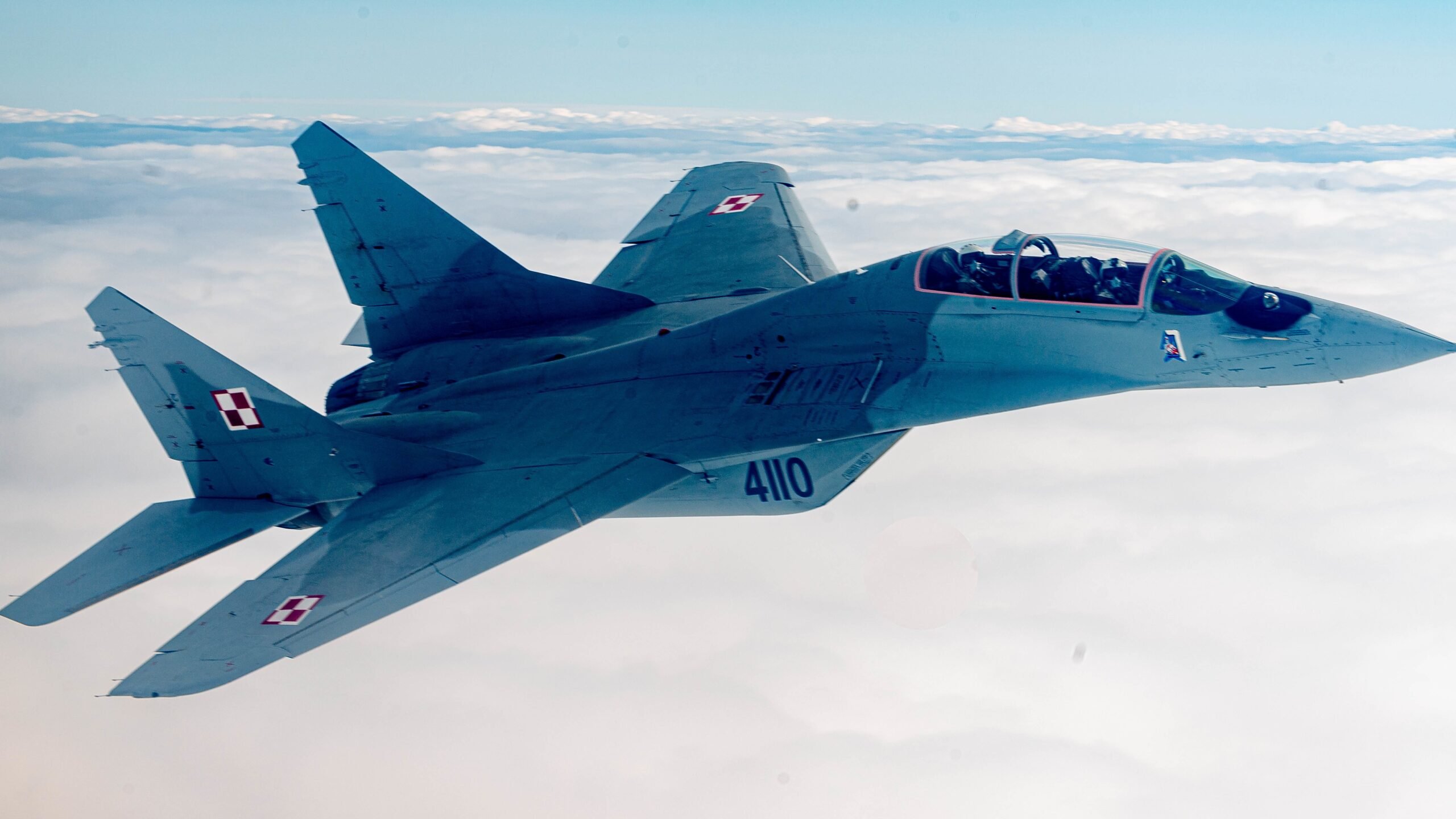Yes, Ukraine wants MiG-29 fighter jets. It seems so did the US military: The Russian MiG-29 – given the designation Fulcrum by NATO – was one of the Cold War period’s most capable fourth-generation fighter aircraft. The MiG-29 was widely adopted during the Cold War, and today the MiG-29 and its many variants remain in service with the Air Forces of a number of different countries. In the mid-1990s, the United States even purchased a handful of MiG-29 aircraft in an effort to both prevent their delivery to one of its adversaries and also as an opportunity to get a better up-close look at the Fulcrum.

MiG-29: A Short History
The MiG-29 emerged as the first Russian-designed fourth-generation jet fighter, and the development of the Fulcrum began in 1974. The first MiG-29s entered into service in the Soviet Union in 1982, and was envisioned as a lightweight multirole fighter that would operate alongside of the heavier SU-27.
The MiG-29 proved to be a highly capable fourth-generation fighter, particularly with regards to the aircraft’s flight performance. The MiG-29s two Klimov/Sarkisov RD-33 turbofan engines that provide 22,200 pounds of thrust, which gives the Fulcrum a maximum speed of Mach 2.3 (1,520 mph), making the MiG-29 slightly faster than the American F-16 and slightly slower than the F-15. But even more impressive is the MiG-29’s maneuverability, with the MiG-29 capable of outperforming the very nimble F-16 when it comes to both instantaneous and sustained turns (twenty-eight degrees per second compared to twenty-six degrees per second).
MiG-29s Join NATO? Let the Testing Begin
Indeed, following the reunification of Germany, the German Air Force began incorporating the MiG-29s operated by the former East German Air Force. This gave United States Air Force pilots an opportunity to come face to face with the Fulcrum in aerial exercises, and the American pilots found that in short-range dogfights fought at low speeds the MiG-29 demonstrated agility that they could not match with their aircraft. Assessments found that at ranges out to 40 miles apart American aircraft enjoyed an advantage over the Fulcrum, but at ranges of 10 miles apart that advantage was rapidly diminishing and by the time engagements closed to five miles apart the MiG-29’s superior maneuverability gave it an advantage.

The MiG-29 was also impressive with regards to the armaments that it could be outfitted with. The Fulcrum is equipped with seven hardpoints that can mount a variety of air-to-air munitions as well as air-to-ground weapons (though the MiG-29’s eight-thousand-pound capacity for such weapons is less than other comparable aircraft), but most impressive was the MiG-29’s ability to short-range R-73 infrared-guided missile. This weapon could be aimed and fired using a helmet-mounted sight, meaning that a Fulcrum pilot needed only to look at a target in a sixty-degree arc in front of him – as opposed to needing to position the aircraft so that it was pointed at the target – in order to shoot one of the missiles.
In addition, the MiG-29 provided operators with flexibility, as it was designed to be capable of launching from unprepared airstrips.
Despite its many advantages, the Fulcrum did also have some significant downsides. The MiG-29 did not feature modern pilot displays, avionics, or controls, and as a result, pilots had to look down at their console more often than pilots equipped with Head’s Up Displays. The MiG-29’s sensors also did not perform particularly well, while the Fulcrum also possessed a relatively short maximum range of only 900 miles without aerial refueling capability.
How the U.S. Military Bought 21 Fulcrums
Following the collapse of the Soviet Union, a number of newly independent states suddenly found themselves in possession of former Soviet military equipment. This included the small country of Moldova, who now has possession of 34 MiG-29s.

In 1996, Moldovan authorities informed U.S. officials that the country had been contacted by the Iranian government over the potential purchase of the MiG-29s. Iran already operated a number of MiG-29 aircraft, but the MiG-29C variant – of which Moldova had 14 – would have represented an upgrade over its older models. Of more concern to Clinton administration officials, however, was the potential for MiG-29Cs to be used for the delivery of nuclear weapons. It was this concern that allowed the United States to purchase a number of MiG-29s from Moldova as part of the Department of Defense’s Cooperative Threat Reduction Program.
The following year, the United States completed the purchase of 21 MiG-29s – including the 14 MiG-29Cs – from Moldova, in exchange for a $40 million cash payment and humanitarian assistance, as well as non-lethal defense equipment such as military trucks.





